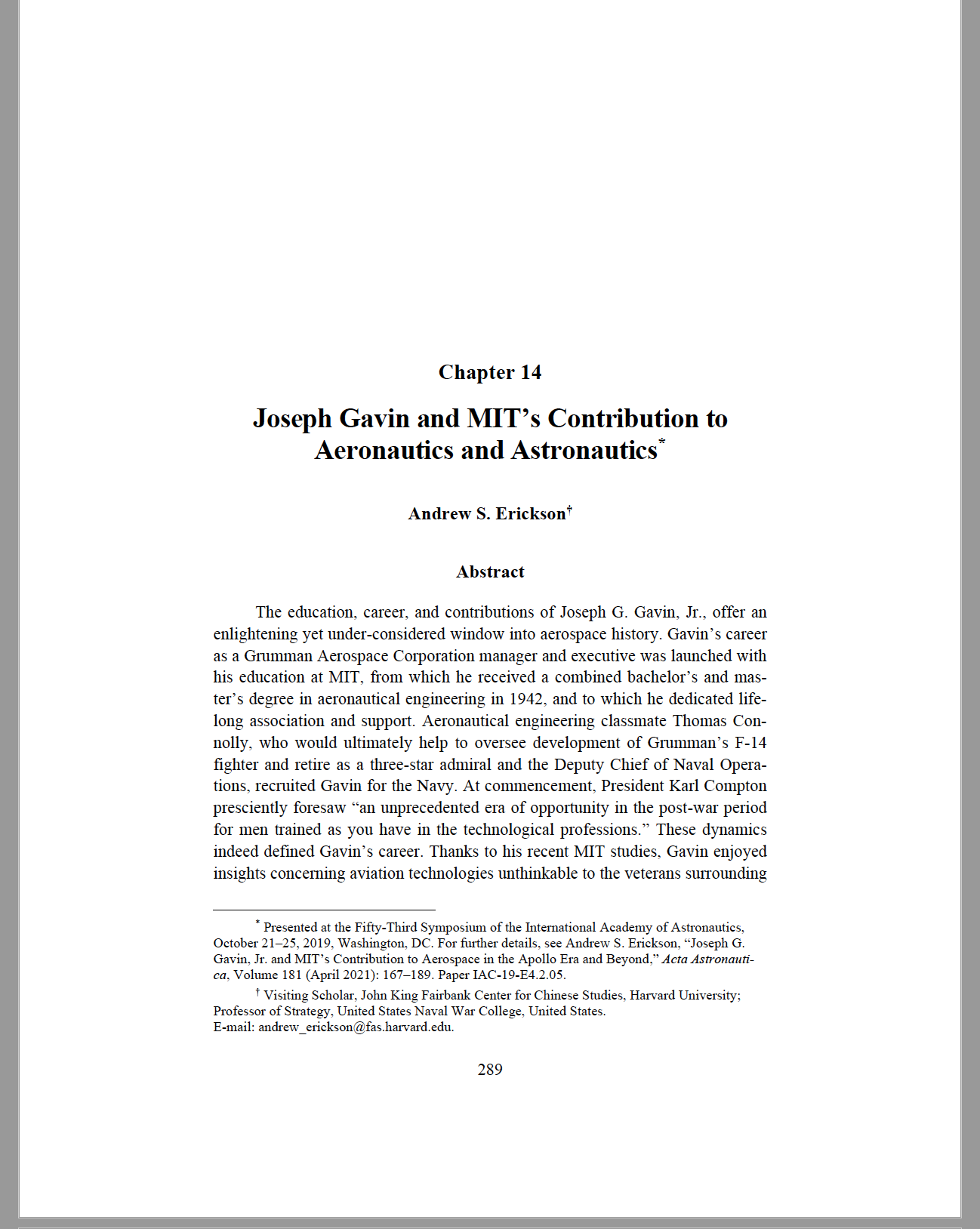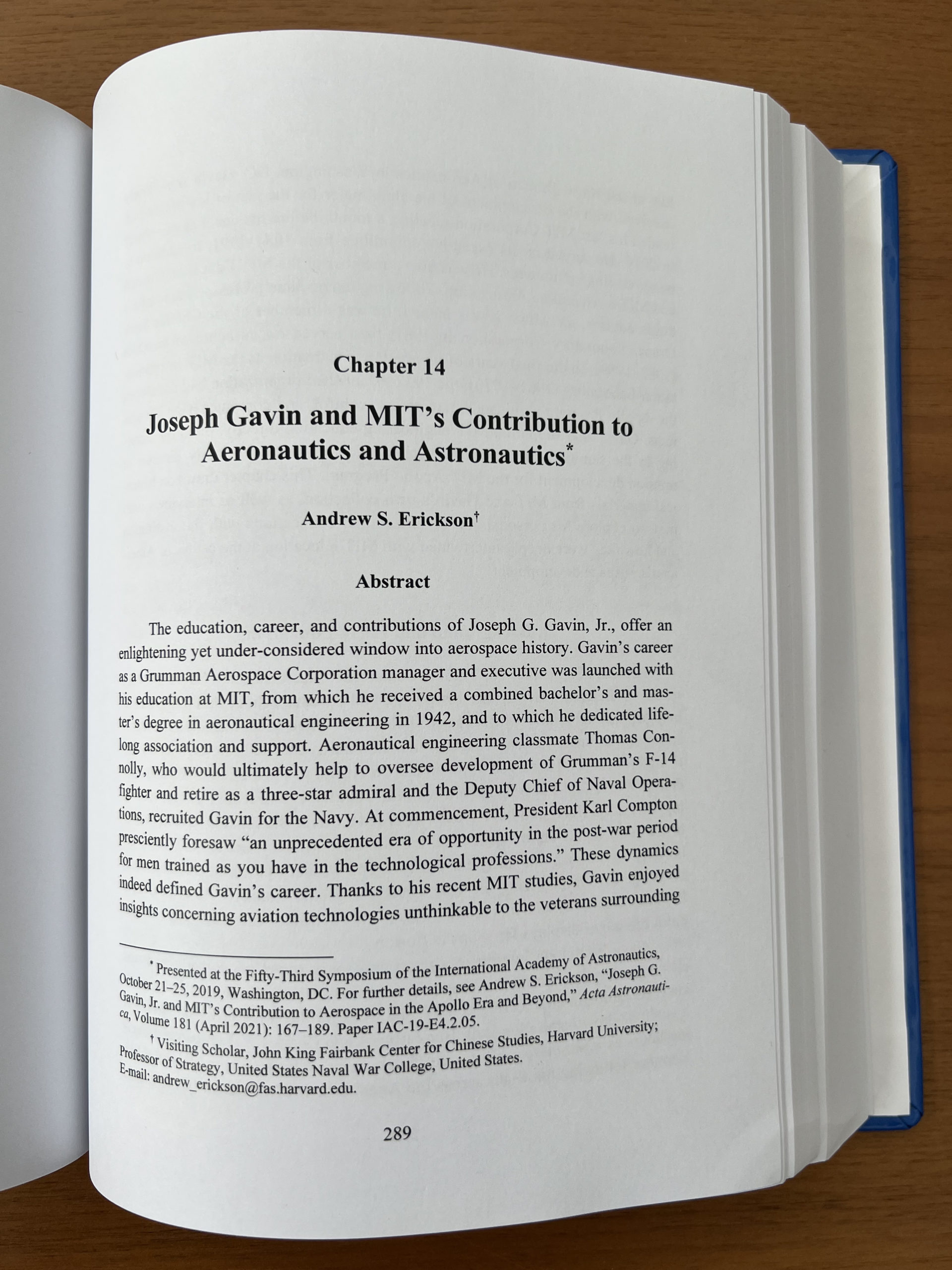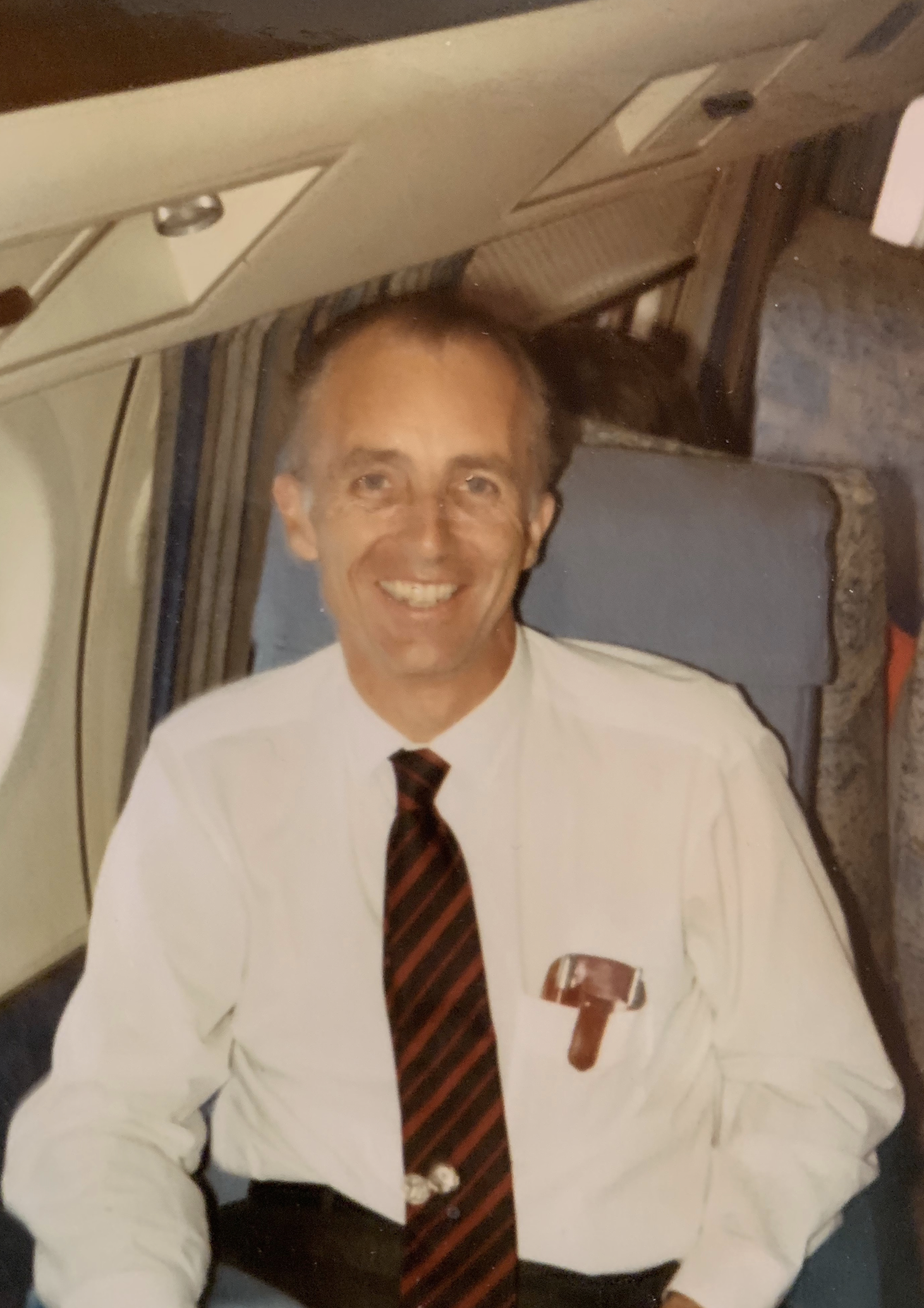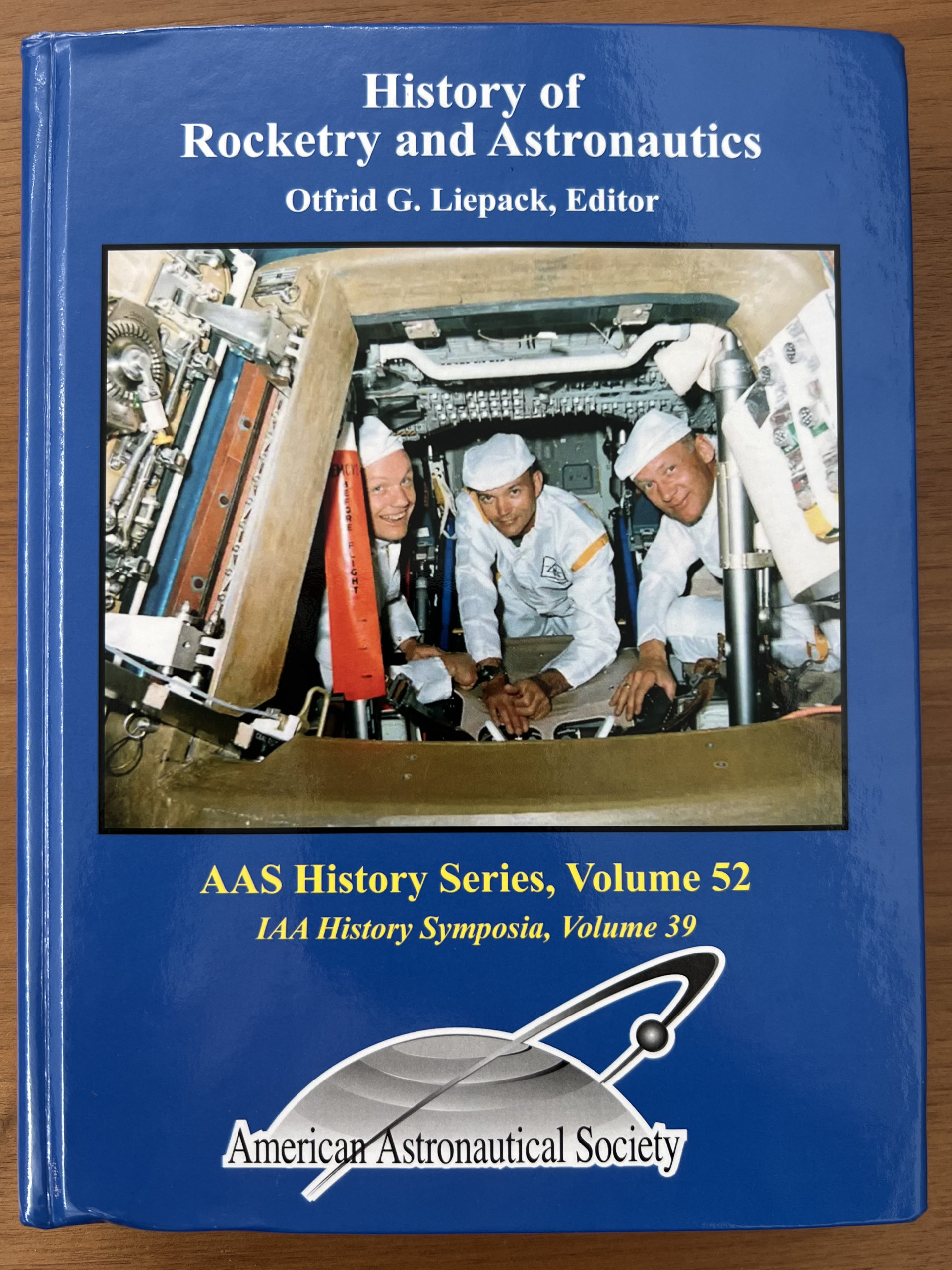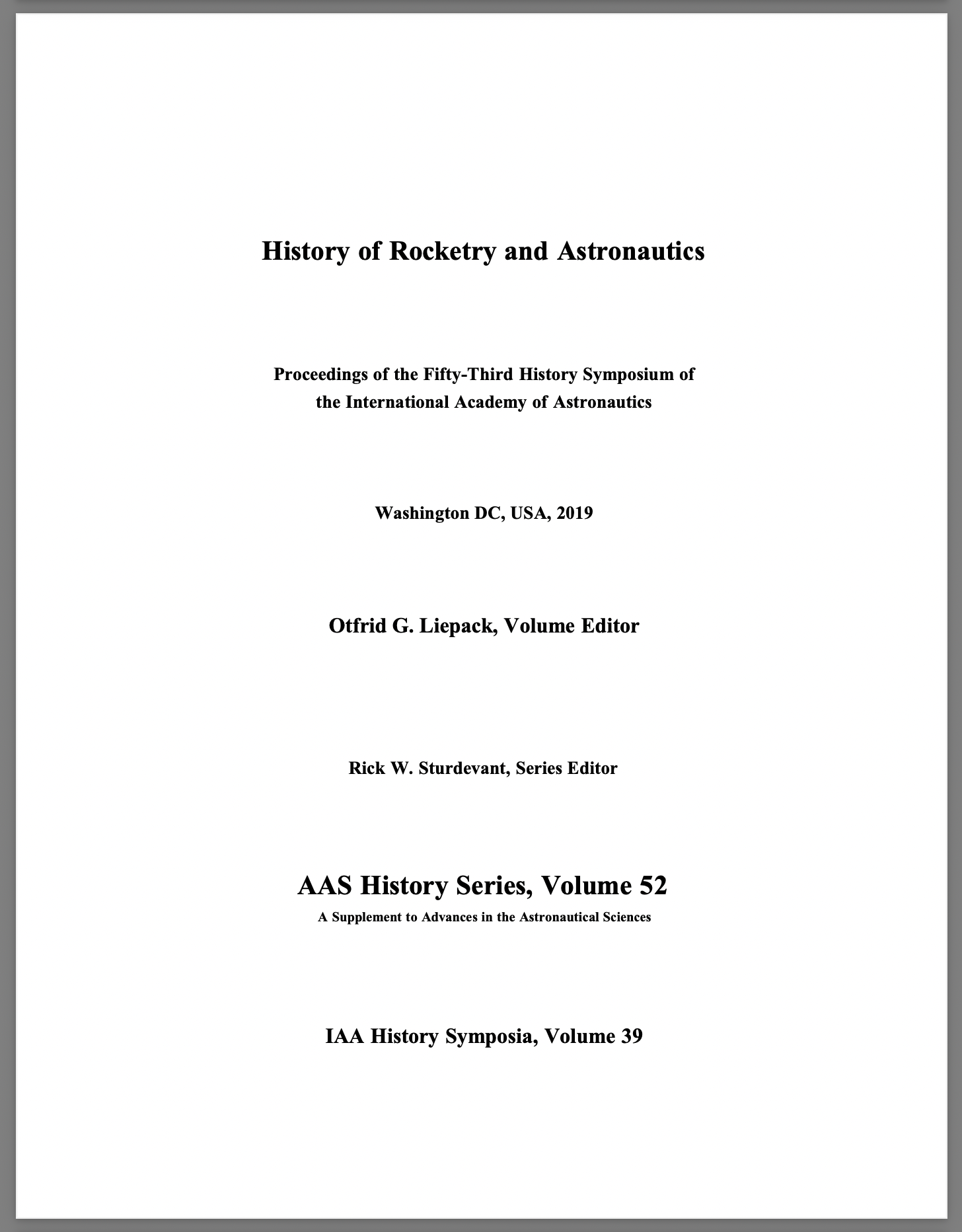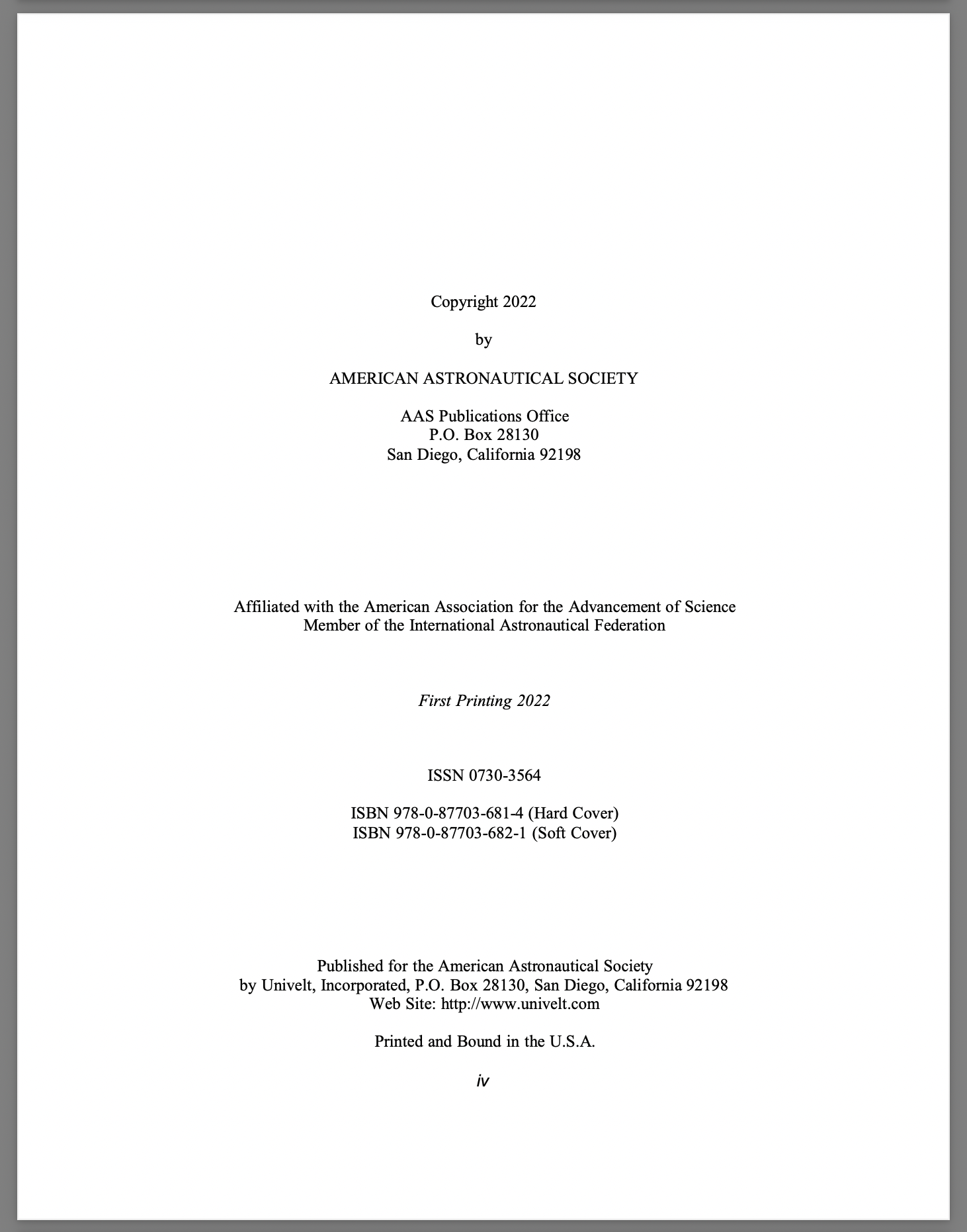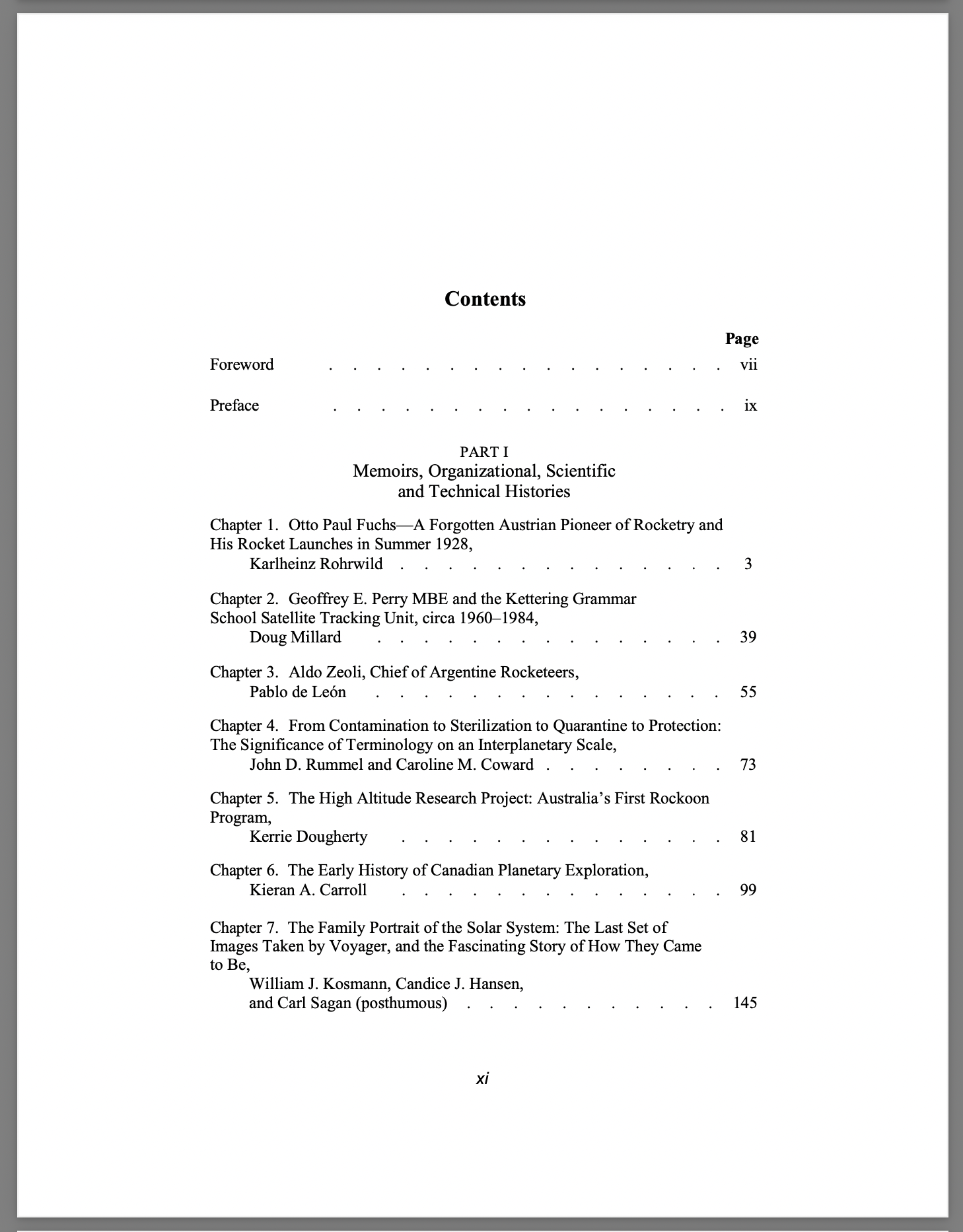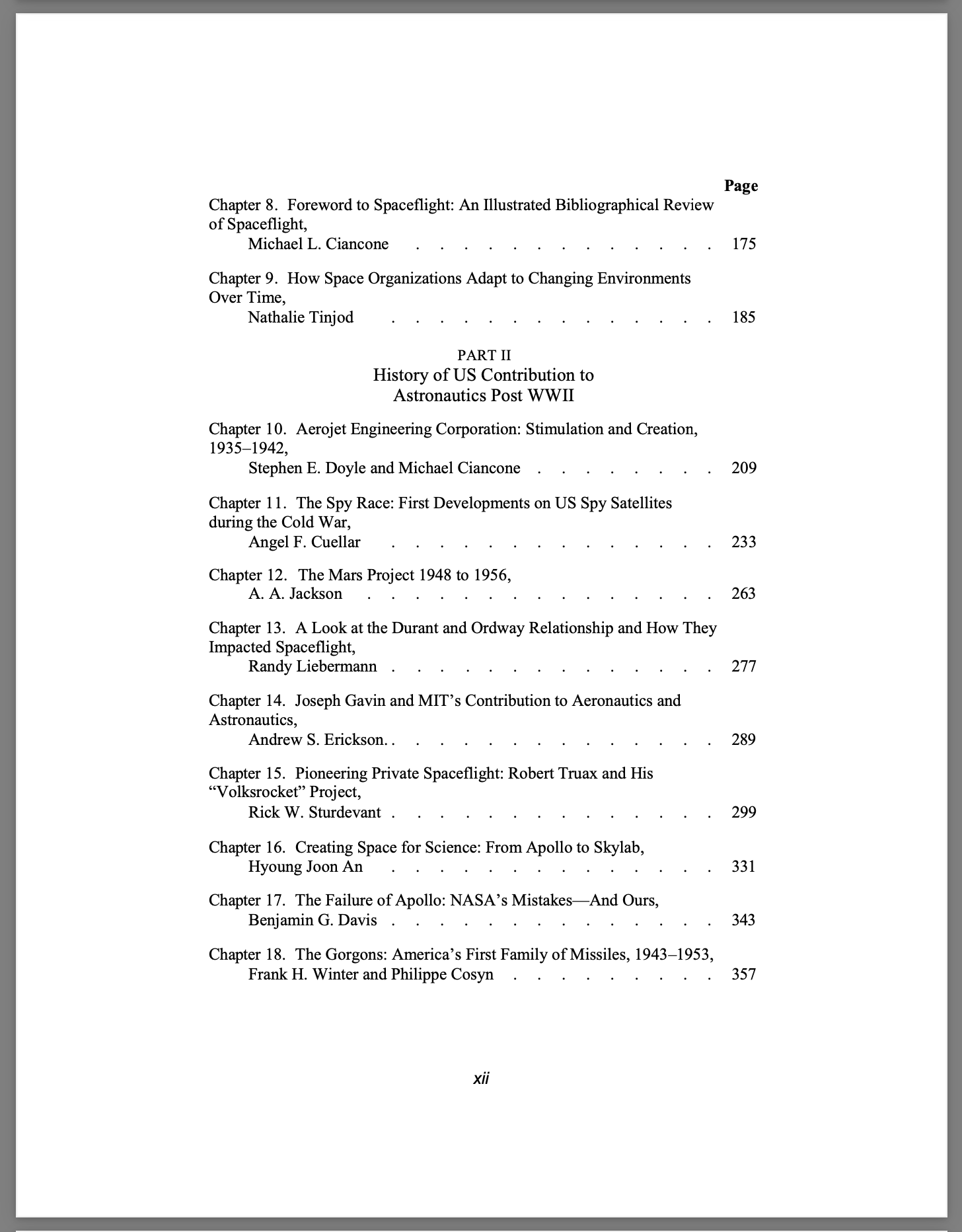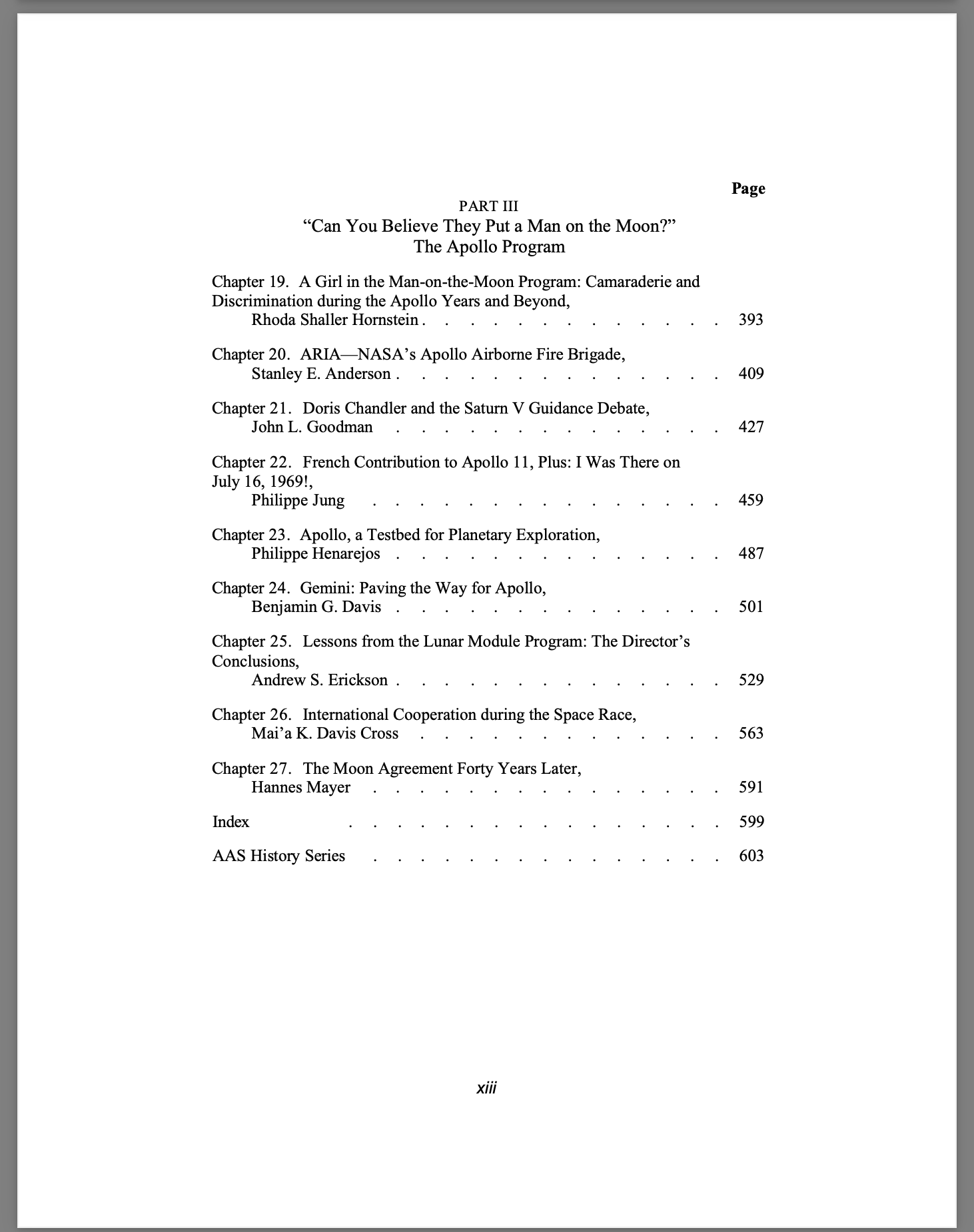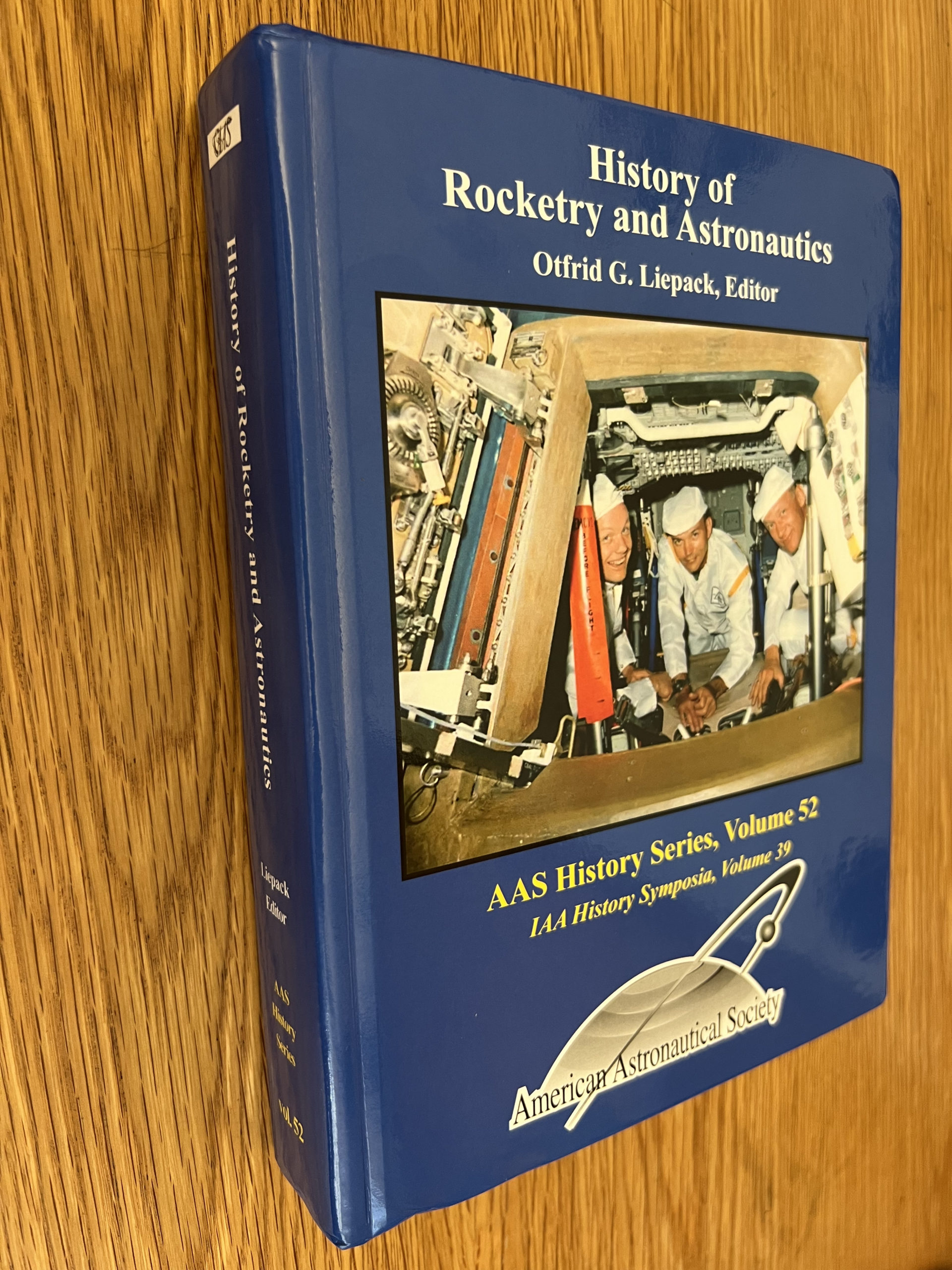Joseph Gavin and MIT’s Contribution to Aeronautics and Astronautics
Chapter 14
Joseph Gavin and MIT’s Contribution to Aeronautics and Astronautics*
Andrew S. Erickson†
* Presented at the Fifty-Third Symposium of the International Academy of Astronautics, October 21–25, 2019, Washington, DC. For further details, see Andrew S. Erickson, “Joseph G. Gavin, Jr. and MIT’s Contribution to Aerospace in the Apollo Era and Beyond,” Acta Astronautica, Volume 181 (April 2021): 167–189. Paper IAC-19-E4.2.05.
† Visiting Scholar, John King Fairbank Center for Chinese Studies, Harvard University; Professor of Strategy, United States Naval War College, United States. E-mail: andrew_erickson@fas.harvard.edu.
Abstract
The education, career, and contributions of Joseph G. Gavin, Jr., offer an enlightening yet under-considered window into aerospace history. Gavin’s career as a Grumman Aerospace Corporation manager and executive was launched with his education at MIT, from which he received a combined bachelor’s and master’s degree in aeronautical engineering in 1942, and to which he dedicated life-long association and support. Aeronautical engineering classmate Thomas Connolly, who would ultimately help to oversee development of Grumman’s F-14 fighter and retire as a three-star admiral and the Deputy Chief of Naval Operations, recruited Gavin for the Navy. At commencement, President Karl Compton presciently foresaw “an unprecedented era of opportunity in the post-war period for men trained as you have in the technological professions.” These dynamics indeed defined Gavin’s career. Thanks to his recent MIT studies, Gavin enjoyed insights concerning aviation technologies unthinkable to the veterans surrounding him at the Naval Bureau of Aeronautics in Washington, DC. Gavin was closely involved with the development of his alma mater for the rest of his life and attended his last MIT Corporation meeting a month before his death at age ninety in 2010. He served on its executive committee from 1984–1991, in addition to many visiting committees. He was also a member of the MIT Education Council and MIT’s Alumni/ae Association. Following his onetime professor and master’s thesis advisor, for whom it was named, he was a member of the Charles Stark Draper Laboratory Corporation in 1981, then served on its board of directors (1982–1989). In the final years of its previous incarnation as the MIT Instrumentation Laboratory (1961–1970), the 1932-established organization had developed the Apollo Program’s guidance, navigation, control, and computer (GNCC) systems. Gavin also supported MIT engineering education directly, often by lecturing in the seminars of such professors as Richard Battin, formerly director of mission development for the MIT Apollo Program. This chapter draws on historical materials from MIT and Gavin’s own collection, as well as interviews with him, to explore his personal and organizational connections with the institution and how they were deeply intertwined with MIT’s location at the center of American aerospace development.
I. Background and Early Education
Born on September 18, 1920, in Somerville, Massachusetts, Gavin grew up nearby in Brighton. His father, Joseph Sr., had to leave school in ninth grade to help support his family when his own father was killed in an industrial accident. Joseph Sr. ultimately become partner in a national syndicate of newspaper advertising brokers [1]. He served thrice in the US Army: in 1916 on the Mexican border; in World War I as a lieutenant with the 26th Division Field Artillery, receiving the Purple Heart and having been awarded a Silver Star; and in World War II in Germany as a Commandant for the U.S. Army Military Government, and ultimately as the local authority for the U.S. 2nd Military Government Regiment, in charge of administering the Rheingaukreis (Rhine County). He retired as a Lieutenant-Colonel. Gavin’s mother, Elizabeth Tay, was a commercial artist who produced major displays for shops in Boston.
Gavin’s lifelong interest in aircraft and space travel began early and was encouraged in three formative phases: youthful stimulus from fiction and experience, education in engineering at MIT, and work for the Navy in Washington. As a youth he drew inspiration from Buck Rogers and Charles A. Lindbergh, traveling hours as a seven-year-old to see “Lucky Lindy” land on a small airfield in Vermont following his flight across the Atlantic in 1927. From early on, Gavin recalled, “I was pretty sure I wanted to be an engineer… and do something with flying machines.” This was despite his otherwise supportive father’s advice: “Don’t go into that business” [2].
After attending other public schools through sixth grade, Gavin received his secondary education at the Boston Latin School; where he starred on the football team as a 180-pound tackle [3] until he broke his nose, and received an award in modern studies as a junior [4]. He was also a marksman in the rifle club. Latin School was “a big leg up, very demanding. By the time I left, I knew how to study. Several teachers conveyed the idea that if you’re going to do something, do it well.” Senior year, Gavin enjoyed assembling experiments for the Physics Department [5].
II. The MIT Years
Gavin arrived at MIT in fall 1937. After Latin School, “entering MIT was pretty straightforward.” Gavin wanted to major in Aeronautics, which required successful performance freshman year, followed by an interview. The department was highly selective because before World War II, obtaining in employment in the field was difficult. A year later, Gavin joined an Aeronautics Department class of only twenty-eight to thirty students [6].
In a then-common situation, Gavin continued to live in his parents’ apartment as a commuter student. The varsity (heavyweight) crew team [7], of which he ultimately became captain and rowed in the leading stroke position [8], allowed him to meet classmates from other departments in the then-decentralized school. This yielded lifelong friendships. He lunched and socialized between classes with other commuting students at their “5:15 Club,” which “served a great purpose” [9]. His other activities included serving as secretary-treasurer of the sophomore class [10].
In academics, Gavin progressed “fairly easily,” having learned the importance of “Doing your homework on time.” Emphasis on basic requirements left little choice in classes. Gavin may have been one of the last aircraft engineers to take stoichiometry, which he regarded as “the chemistry of the furnace.” The faculty was fascinating. Aeronautical engineering professor Otto C. Koppen was “designing a little airplane at his home on the side.” A Swiss engineer, stranded in America by the war, found surprisingly effective ways to teach structural engineering using examples from the Swiss rail system. In a rare elective, a Princeton professor explained the Revolutionary War “and how we nearly lost it” [11].
War clouds overhung society: “Everybody had a feeling that there was a blow going to fall.” On track to obtain a bachelor’s degree with honors in aeronautical engineering in 1941, Gavin was still underage to transition from the Re-serve Officer Training Corps (ROTC) to military assignment. This fact, combined with his documented talent, prompted MIT to invite him and classmate Rudy Hensel to spend a fifth year as MIT’s only two students, on full-tuition scholarships, completing a combined bachelor’s and master’s degree in aeronautical engineering. Nominally under the supervision of Professor Charles Stark Draper, who in reality was too busy “building lead-computing gunsights in the basement for the Navy” to meet with them more than once, they analyzed wave effects in MIT’s closed return Wright Brothers Wind Tunnel, then the world’s most advanced setup of its kind. In addition to many other responsibilities during his exceptional career, Gavin’s professor would later become head of the Department of Aeronautics and Astronautics [12].
On December 7, 1941, Gavin and Hensel were working in Gavin’s parents’ apartment. Mid-afternoon, his father interrupted: “You’d better come listen to the radio—Pearl Harbor has been attacked” [13]. Despite some earlier thoughts about applying to the Naval Academy, Gavin had taken the Army ROTC path to MIT. He would likely have been assigned to the Army engineers. However, his fifth year at MIT proved to be a turning point. He met naval officer classmates, back for advanced education after a decade in the fleet. Some of them, led by aeronautics classmate Thomas F. Connolly, recruited Gavin for the Navy and made sure that he received the proper application papers. This launched another lifelong friendship: Connolly, who would ultimately help oversee development of Grumman’s F-14 fighter and retire as a three-star admiral and Deputy Chief of Naval Operations, [14] also kept in touch to pursue his conviction that the Navy should have a role in space [15].
After completing a thesis on “Aerodynamic Damping of an Aerofoil Oscillating in Pitch” [16], Gavin earned a combined bachelor’s and master’s degree with honors in aeronautical engineering in 1942. He graduated in Walker Memorial Hall with blackout curtains drawn—German submarines then threatened the East Coast [17]. At commencement, MIT President Dr. Karl T. Compton declared, “our success in this war may very possibly depend in a large degree on the wisdom and efficiency with which the professional manpower of this country is handled and trained,” particularly specialists in “‘strategic’ technological professions.” He presciently foresaw “an unprecedented era of opportunity in the post-war period for men trained as you have in the technological professions” [18]. These dynamics indeed defined Gavin’s early career. … … …
(Photo from family of Joseph G. Gavin, Jr.)
VOLUME INFORMATION:
This is the 39th volume (plus two index volumes) in the International Academy of Astronautics (IAA) History Series of the American Astronautical Society (AAS) History Series (volume 52) and the last published by Univelt. As such, it is the final volume of the 53 IAA History Symposia (1967–2019). Focusing on the 50th Anniversary of the Apollo 11 lunar landing ends this series on a high note!
Volume 52 of the AAS History Series
Proceedings of the 53rd History Symposium of the International Academy of Astronautics
Pub. 2022, 622pgs. Ed. Otfrid G. Liepack. Includes CD-ROM containing full text in pdf format
Hard Cover. 978-0-87703-681-4.
pp. vii–viii
History of Rocketry and Astronautics
AAS History Series, Volume 52 International Academy of Astronautics Symposia
Foreword
Like its predecessors, the Fifty-Third History Symposium of the International Academy of Astronautics, held in conjunction with the Seventieth International Astronautical Congress (IAC) in Washington, DC, during the third week of October 2019, followed the well-established pattern of including the presentation of papers on memoirs, organizational, scientific, and technical histories, plus others related to rocket and space-related activities in the annual meeting’s host nation—in this case, the United States. Given that 2019 marked the fiftieth anniversary of the first lunar landing, however, both IAC program planners and IAA History Committee members chose to give special emphasis to the significance of the Apollo 11 mission specifically and, in a broader sense, to the entire Apollo program.
That focus prompted me to recall one of those memorable moments when anyone then witnessing an event can tell you where and when they were. On Sunday July 20, 1969, at 6:56 P.M., for example, I—along with several dozen other Volunteers in Service to America (VISTA) about to depart for one-year assignments to villages across the state—was watching television in an Anchorage, Alaska, hotel lobby. Through this very first, satellite-delivered, live television broadcast in Alaska, we watched astronaut Neil Armstrong step from the Apollo 11 Lunar Module Eagle onto the Moon and say, “That’s one small step for [a] man, one giant leap for mankind.” All of us VISTA volunteers and others shouted for joy and clapped hands. I shall never forget that historical moment, but I am not sure any of us truly appreciated—let alone bothered to understand at the time—how much effort went into providing that live coverage to Alaskans.
The US Air Force had launched TACSAT 1, an experimental communications satellite developed by Hughes Aircraft Company, from Cape Canaveral on February 9, 1969. Controllers positioned the 1,600-pound satellite in a geosynchronous orbit over the Pacific Ocean. That satellite provided a crucial link between the US Army SATCOM Agency at Fort Monmouth, New Jersey, and a military satellite communications terminal located adjacent to broadcast pioneer Augie Hiebert’s television station KTVA channel 11, the CBS network television station in Anchorage. Television signals transmitted from the Apollo 11 astronauts on the lunar surface went from the NASA Space Center in Houston, Texas, to commercial television facilities and were “picked off the air” by the Army SATCOM Agency’s Engineering Test Facility at Fort Monmouth.
On July 11, 1969, an Air Force C-141 aircraft crew had flown the Anchorage satellite communications station, an AN/TSC-54 network terminal—developed by Radiation, Inc., a subsidiary of Harris-Intertype Corporation—to Alaska. Designed as a quick-reaction terminal for the Defense Satellite Communications System, a complete 23,000-lb TSC-54 terminal—antenna, antenna trailer, operations shelter, and power generator—plus its operating team could be transported on a single cargo aircraft anywhere on Earth. The TSC-54 terminal was placed adjacent to Hiebert’s KTVA transmitter in Spenard, which covered the Anchorage bowl and much of the adjacent Matanuska-Susitna Valley.
For the Alaskan TV project, the SATCOM Agency at Fort Monmouth relied primarily on an experimental LET-1 terminal designed by the Lincoln Laboratory of the Massachusetts Institute of Technology. The LET-1 network terminal, completed in 1965, had a 15-foot diameter parabolic antenna. As a backup at Fort Monmouth, the Army operators employed a transportable AN/MSC/46 network terminal—specially designed for the Defense Satellite Communications System and boasting a 40-foot diameter parabolic antenna inside a protective radome—that Hughes Aircraft Company had developed specifically for the SATCOM Agency.
In addition to their Alaska TV relay project, Army Space Agency operators at Fort Monmouth relied on another capability—the AN/TRC-157 terminal, for voice and teletype communications, at Wheeler AFB, Hawaii—for playing a significant role in Apollo 11 splashdown and recovery on 24 July 1969. As a US Navy after-action report later explained, “Many problems arose as a result of a quick installation and corrective action was required throughout the mission.” Severe fading problems occurred on July 22. When the fading continued to in- crease, TACSAT-1 was released for maintenance on July 23, and twelve hours before recovery, the naval task force commander learned that TACSAT-1 could not be used except in an emergency. Then, two hours before recovery, TACSAT-1 “returned [to service] providing two simplex circuits.” The after-action report concluded that “except for the failure of the satellite, most of the problems experienced could have been eliminated by improved management.” So, as the American radio broadcaster Paul Harvey used to say, “Now you know the rest of the story.”
Dr. Rick W. Sturdevant
Series Editor
Space Training and Readiness Command
Office of History
***
pp. ix–x
Preface
The major goal of the 70th International Astronautical Congress (IAC) was to celebrate the 50th anniversary of the Apollo 11 landing. The conference was held 21–25 October 2019 in Washington, DC. To commemorate this astonishing event, the History Committee of the International Academy of Astronautics (IAA) had scheduled for several years a special session with the title “Can you believe they put a man on the moon?” Not that we have any doubt that this happened; we wanted to reach out to a larger audience than those who are just interested in the history of spaceflight. And this was a large success.
We welcomed and listened to lawyers, artists, conspiracy theorists, museum creators, scientists, and engineers. They all shared their side of the Apollo story. This special series of sessions included an afternoon event during the IAA Academy Day on 20 October 2019, in which NASA Chief Historian Dr. Bill Barry moderated a plenary session on the Apollo anniversary. We were happy to listen to several talks, which have been videotaped and added to this set of proceedings.
- Bill Barry, NASA Chief Historian: “Apollo: A 50th Anniversary Perspective”
- Jim Green, NASA Chief Scientist: “Apollo’s Science Results”
- John Logsdon, George Washington University: “Once We Went to the Moon”
- Howard McCurdy, American University: “When the Moon Is in the Seventh House… .”
- Teasel Muir-Harmony, Smithsonian: “Around the World with the Apollo 11 Crew”
- Roger Launius, Smithsonian: “Apollo’s Legacy: A Meaning for the Moon Landing”
Besides the Apollo event, the History Committee of the IAA had two more sessions. One session continued the tradition to focus on the history of the host country. We decided this year to specialize on US space history after World War II. We had the chance to hear about important figures of the US space companies and organizations, such as Fred Ordway, Fred Durant, Joseph Gavin, and Andrew G. Haley, to mention just a few.
During the second session, we had talks introducing more pioneers, the history of Voyager’s family portrait of the solar system, and many other interesting talks.
Whether the audience for these proceedings is interested in learning more about the past or just to wonder how spaceflight started, you have the correct book in your hands.
The slogan of the IAC 2019 was “Space: The Power of the Past, the Promise of the Future.” A nicely chosen phrase to emphasize how important history is, as it drives ideas and dreams to reach for higher places.
Dr. Otfrid G. Liepack
Volume Editor
Pasadena, California
September 2020

